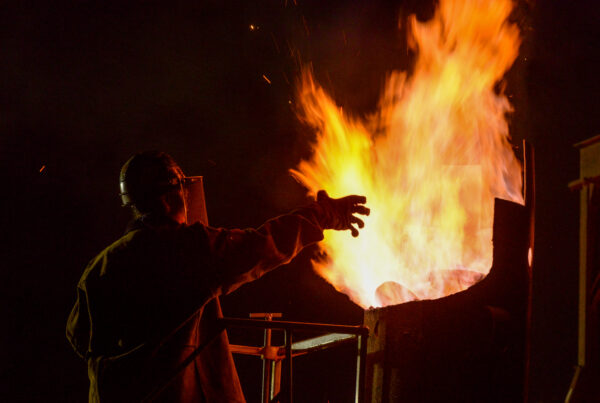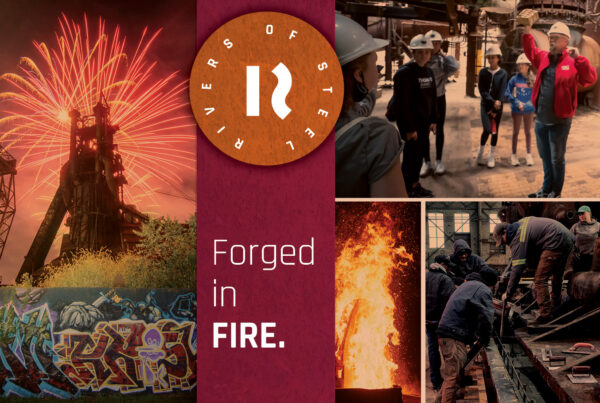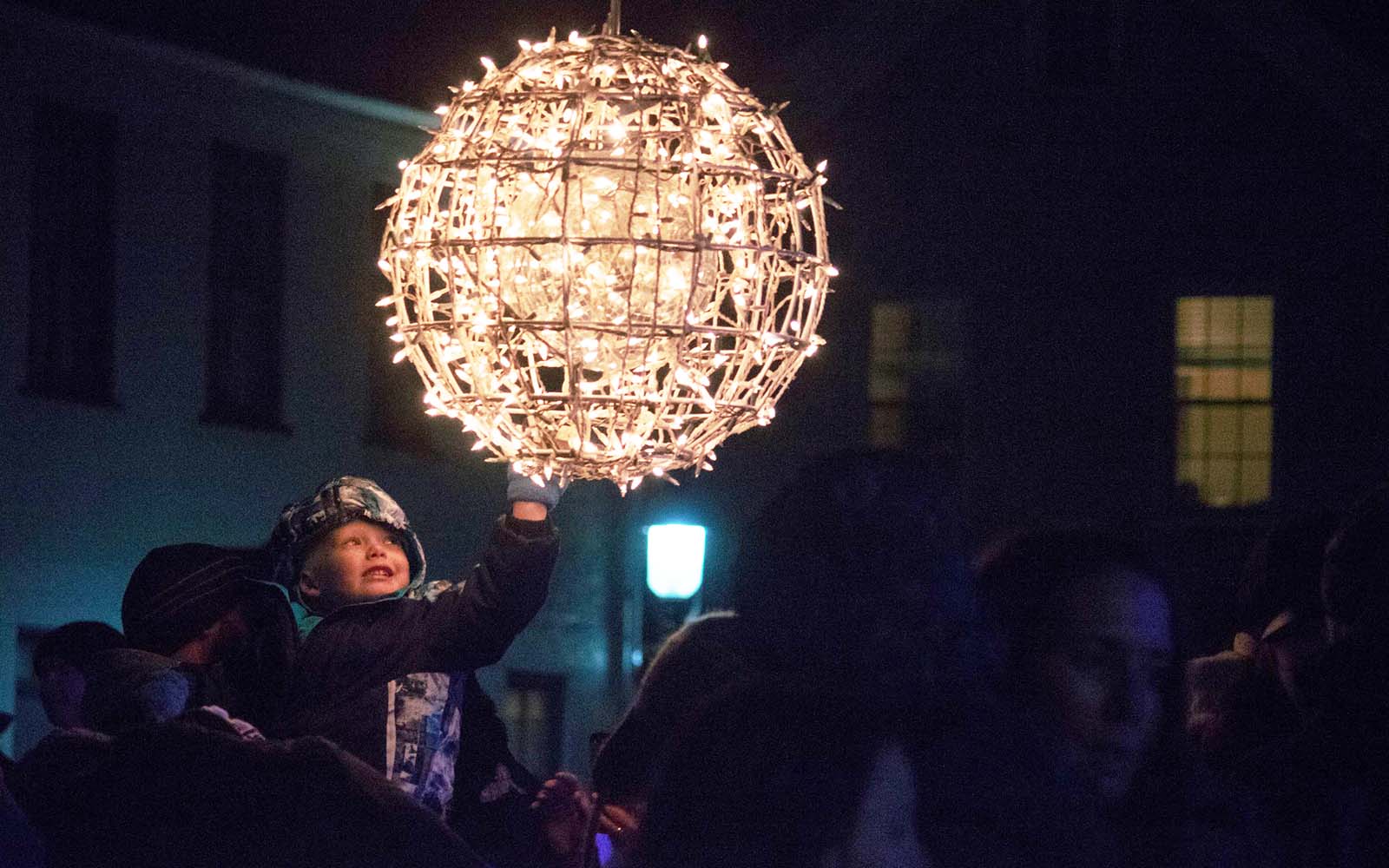
By Brianna Horan, Manager of Tourism & Visitor Experience | Image: In the Historic Harmony District, the ball is dropped at 6:00 p.m. to ring in the new year on German time, as part of the Silvester celebration.
 Celebrating Silvester in the Historic Harmony District
Celebrating Silvester in the Historic Harmony District
As the calendar turns from what is often a rollicking evening of socializing to a usually quiet and introspective first morning of a new year, our minds naturally turn to reflections on the past and visions of what’s to come. The Silvester New Year’s Eve celebration in Harmony, a quaint historic district in Butler County, does that too, wrapping up historic ethnic traditions in a salute to a new year that’s still six hours in the future. The town comes together in the afternoon of New Year’s Eve to celebrate when the clock strikes 6 p.m.—which is midnight in Germany—to usher in the new year alongside a country that has shaped much of Harmony’s history.
This celebration of Silvester—German New Year’s Eve—is free to attend and has been going on for more than a decade in the village, which was the first settlement in America of the Harmonist Society, a group led to the United States by George Rapp of Württemberg, Germany. The town was laid out by 90 families in 1805 as a “Community of Equality,” and named Harmony for one of the society’s core principles. When the Harmonists left in 1814 in search of more land and better water transportation (they would eventually end up founding Economy in present-day Ambridge), a farmer and blacksmith from Lehigh named Abraham Ziegler purchased it, and then led a group of German-speaking Mennonites from eastern Pennsylvania to resettle in Harmony.
Today there are more than 50 preserved buildings in the Harmony Historic District, a National Historic Landmark, about half of which date to the Harmonist period. In addition to Silvester, the town also hosts annual Oktoberfest and Weihnachtsmarkt (Christmas market) events that draw on traditional crafts and culture.
The ties between Harmony and Germany aren’t just a thing of the past—Rodney Gasch, president of the Harmony Museum, remembers a local resident’s story of playing phone tag with her cousin in Leipzig, Germany, in the days after Christmas. Finally, the two connected at about 5:30 p.m. local time on December 31. “Before long she heard fireworks start to go off over the telephone where her cousin was in Germany, and then a few seconds later heard them go off here in Harmony,” Gasch recalls. The women celebrated Silvester together even though there were more than 4,000 miles and an ocean between them.
So why is New Year’s Eve called Silvester in Germany? December 31 is the Feast Day of Pope Silvester I (his name is also spelled Sylvester) in Western Christianity, a day that marks the burial of this Roman-born saint in the year 335. In 1582, the Gregorian calendar placed the last day of the year on December 31, combining the two occasions. Many of the traditions that are observed during German Silvester stem from an even older pagan celebration in Bavaria called Rauhnächte—like making a lot of noise to drive away evil spirits. Fireworks do the trick these days and are a big part of New Year celebrations in both Germany and the United States. In Harmony, fireworks go off at 6 p.m. after a countdown and ball drop, orchestrated by a local tree trimmer who donates the use of his bucket truck to lower a sparkling ball in the middle of the town square. After that, attendees have the rest of the night to revel until midnight—or sleep soundly knowing that they did their part to welcome the new year. “We have a lot of families with little kids who get to see the fireworks and then go home in time to not miss their bedtimes,” Gasch says.
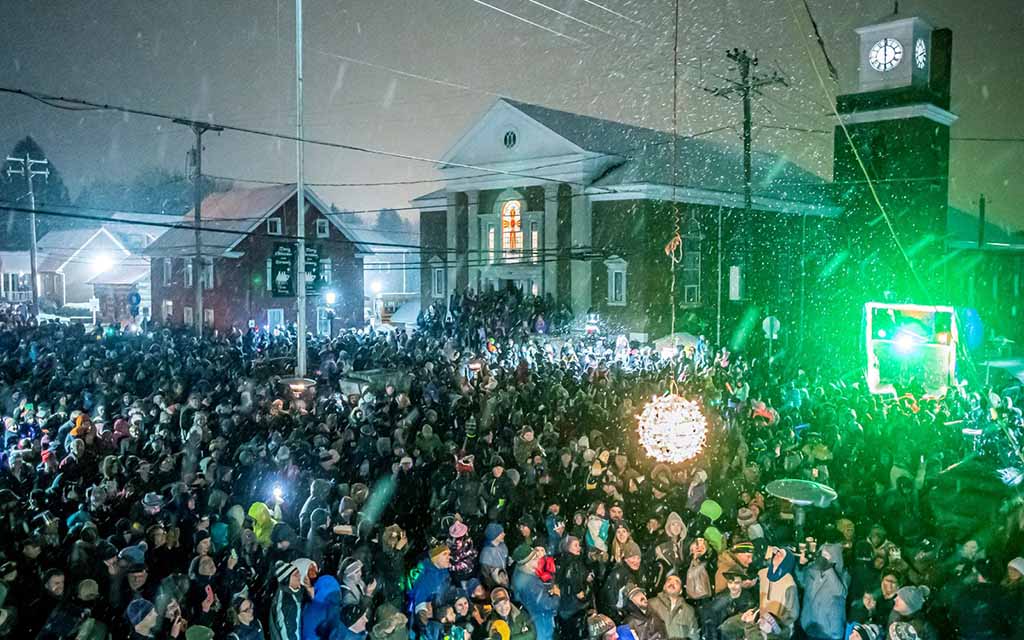
New Year’s Eve, 2019 at Historic Harmony
Attendees can even take home a traditional German dinner meant to bring good luck in the new year: pork loin with sauerkraut, mashed potatoes and gravy, green beans, applesauce, a cookie, and roll with butter. Typically, the meal is served in one of the historic buildings in Harmony, but because of the pandemic the meals are all carryout this year, and must be ordered ahead of time by December 27. “The Harmony Museum has a couple of volunteers who like to cook for large groups of people, so it’s all homemade,” says Gasch. “Pork with sauerkraut is traditionally considered good luck in the coming year. One of the reasons for that is because a pig roots forward to gather his food, and in the new year you always want to move forward. Isn’t that appropriate for the end of 2021?” Sauerkraut is also thought to bring blessings and wealth in the new year, and before enjoying it diners wish each other as much goodness and money as they number of shreds of cabbage in the pot of sauerkraut—which is quite a lot! You can read more about Silvester food traditions in Germany by clicking here.
Speaking of dinner, one of Germany’s most consistent New Year rituals is watching Dinner for One on television while gathered with friends and loved ones around the dinner table. This ten-minute British comedy sketch is shown on German television every year on New Year’s Eve, and holds the Guinness Record as the most frequently repeated TV show in history as a result. In past years, the sketch has been shown in the town’s historic wine cellar, built in 1809. While it’s a beautiful space built from hand-cut stone from the nearby hillside, indoor activities have been eliminated from this year’s festivities because of the pandemic. “It’s usually a really nice place to get out of the cold,” says Gasch.
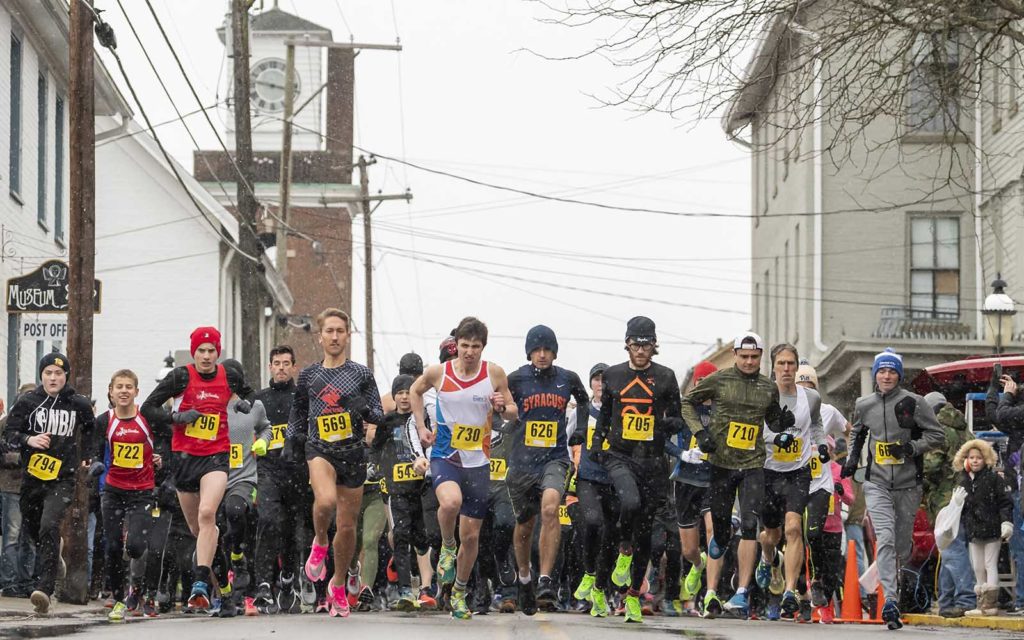
Participants run in a 5K during a “Silvester” celebration, reflecting the HarmonyÕs historic German roots, Tuesday, Dec. 31, 2019, in front of the Harmony Museum. (Steph Chambers/Post-Gazette)
There are still a lot of ways to stay warm at Harmony’s Silvester New Year’s Eve. A 5K Run / Walk and 1-Mile Fun Run kicks off the festivities at 3:30 p.m., an event organized by the Harmony Parks Board, which also sponsors the ball drop and fireworks. Another more recently adopted tradition that emerged in Germany is the Christmas Tree Toss. Harmony Museum volunteers drive the streets of Harmony and neighboring Zelienople in the days leading up to New Year’s Eve looking for Christmas trees that have been tossed to the curb early. Then at the Silvester celebration they get tossed dozens of more times! There is a men’s and women’s division for the competition, along with a wreath toss for kids 12 and younger. The farthest throw in each category wins a gift certificate for $20.22 to one of Harmony’s local coffee shops. This tradition isn’t followed precisely, however. “In Germany, they culminate in tossing all of the Christmas trees in the town square and lighting them on fire for a big bonfire,” Gasch explains. To avoid a big blaze, the tournament is contained to the driveway of the Harmony Museum, and no fire is involved.
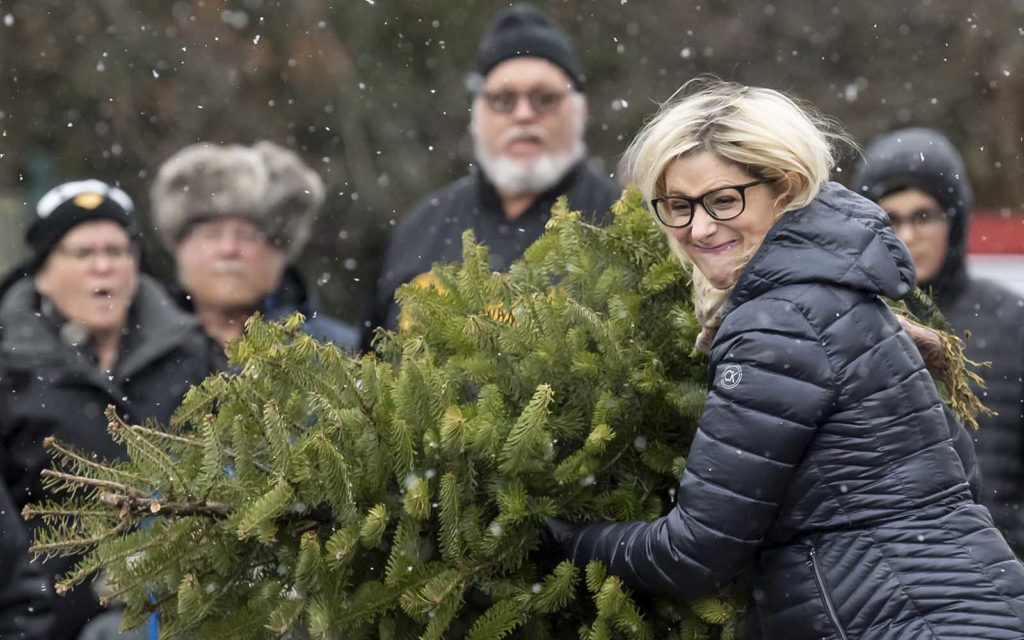
Sheila Yencik of Ross participates in the Christmas tree toss during a “Silvester” celebration, reflecting the Harmony’s historic German roots, Tuesday, Dec. 31, 2019, in front of the Harmony Museum. (Steph Chambers/Post-Gazette)
Gasch has the perfect winter warmer for those who prefer to watch the festivities rather than tie up their racing shoes or roll up their sleeves: Gluhwein. He often spends Silvester in the Gluhwein hut, dressed in lederhosen, knee socks, and a German alpine-style hat while he serves a warm blend of burgundy wine, apple cider, and spices that that translates to “glow wine” in English. This traditional beverage is found at many of the traditional Christmas markets in Germany. Harmony’s is served in a glass keepsake mug that can be brought back that evening or to future events for low-cost refills.
But gluhwein in hand or not, chilly weather is no reason to stay home. This year will mark the return of Silvester after a year off last year due to the pandemic, but in the past around 3,500 people have participated in the German New year’s celebration, which is organized by both the Harmony Museum and the Harmony Parks Board. The crowd is filled with locals and visitors from around the region. Gasch says he often meets people who are recent immigrants to the area from Germany, who studied there, or were stationed in the country while serving in the military. “It’s a great excuse to bundle up and be outside,” says Gasch. “Several years ago, we had gigantic snowflakes that were floating down as the ball dropped and the fireworks started. It was magical, and we’re hoping that happens again!”
Silvester New Year’s Eve starts at 3:00 p.m. and ends a bit after German midnight at 6:00 p.m. on Friday, December 31. The event is free, and full details can be found by clicking here.
All photos provided by Historic Harmony, Inc.
As the manager of tourism and visitor experience for Rivers of Steel, Brianna Horan is always discovering new things to do throughout the Rivers of Steel National Heritage Area—and getting to know its people! Check out her itineraries for other adventures in southwestern Pennsylvania.

 Celebrating Silvester in the Historic Harmony District
Celebrating Silvester in the Historic Harmony District